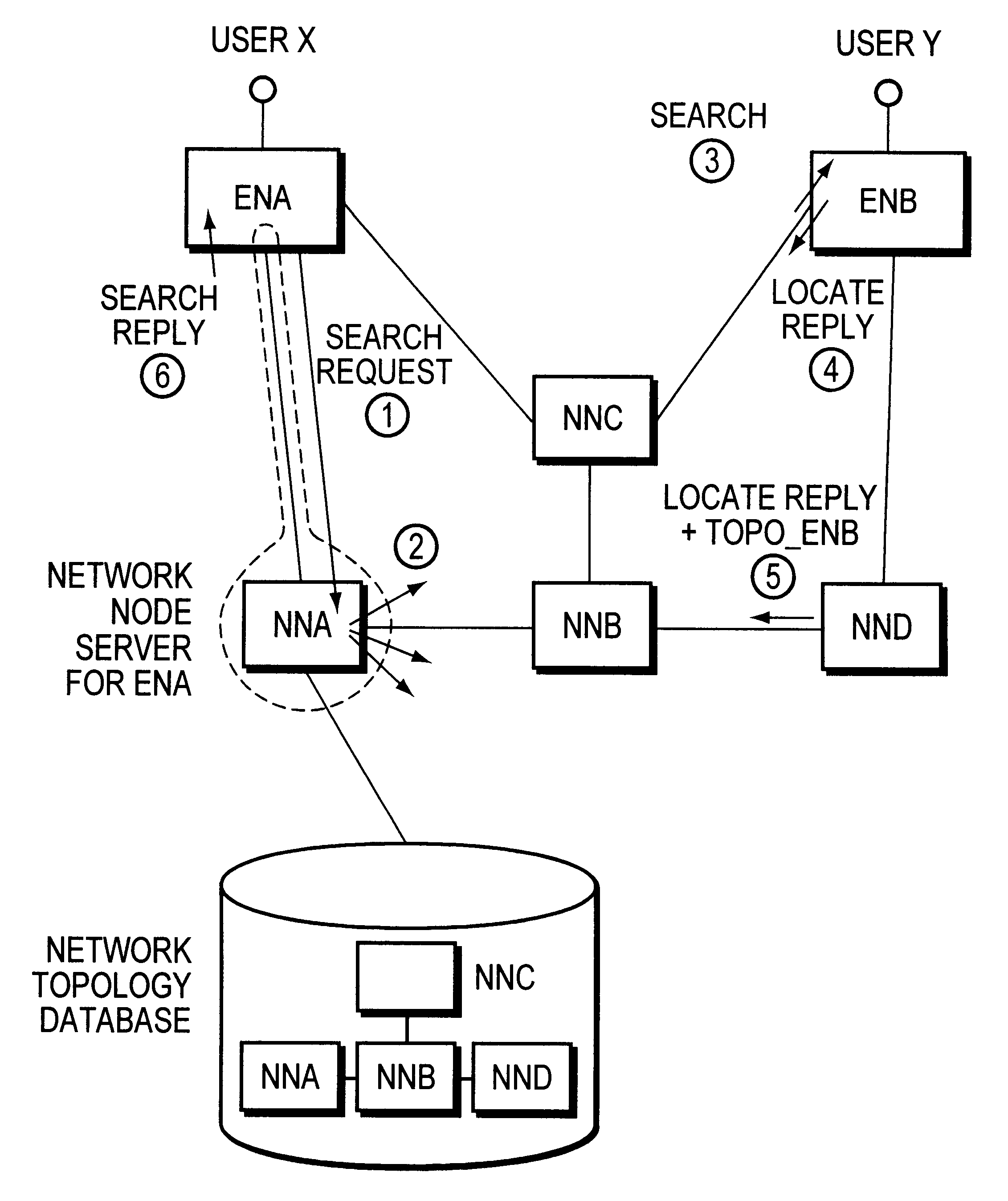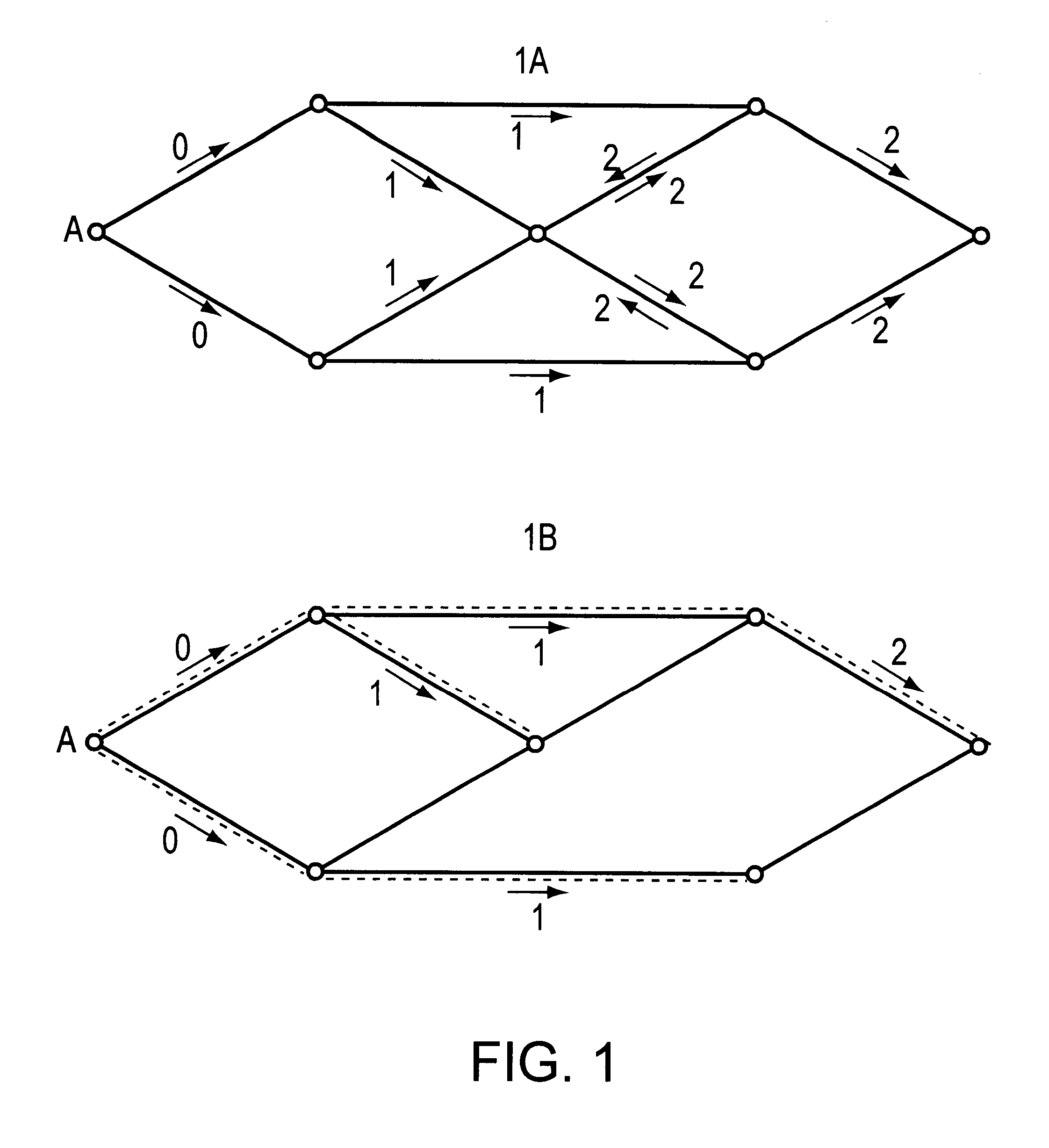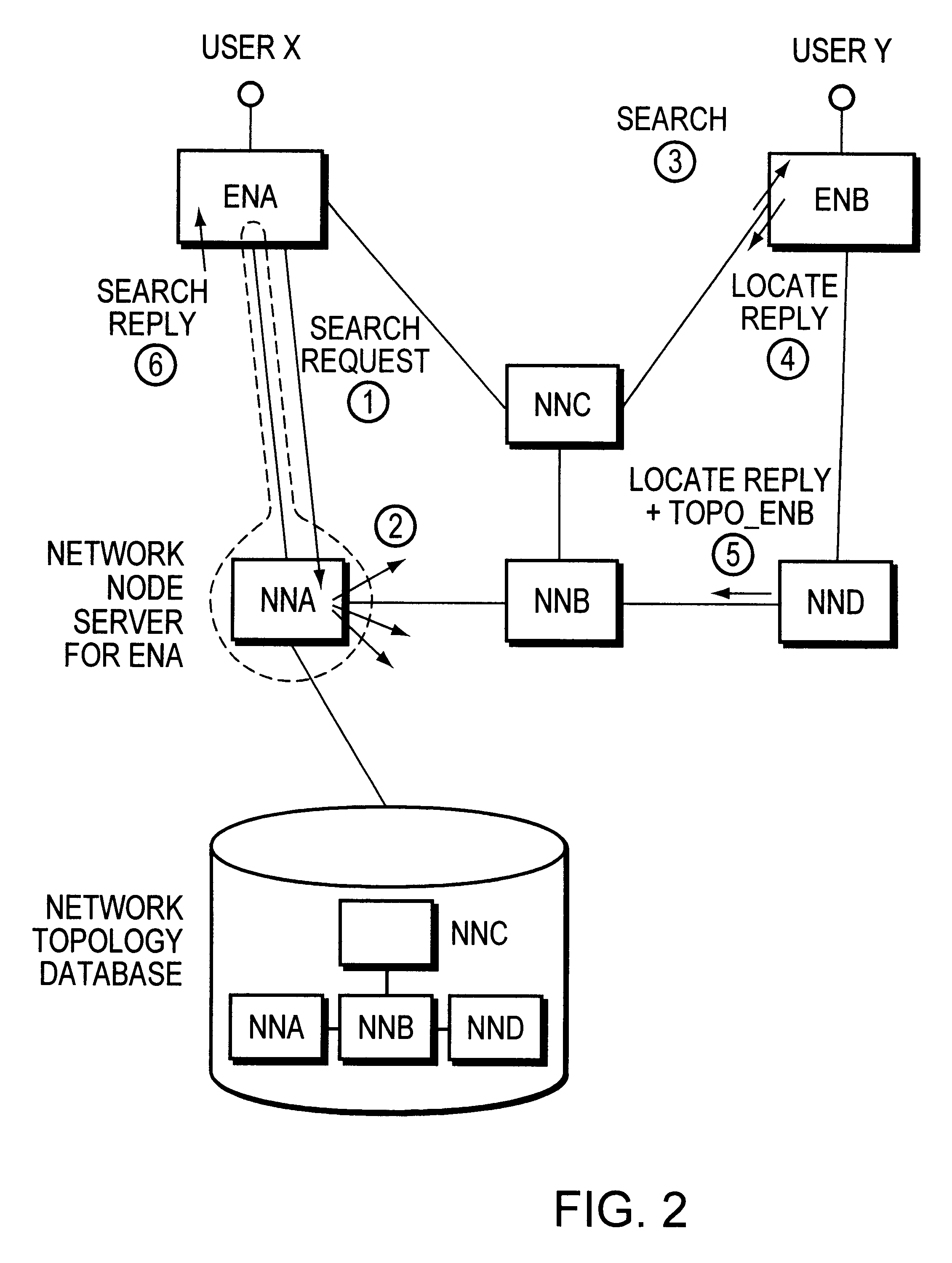Method and system for optimizing connection set-up operations in a high speed digital network
a high-speed digital network and optimization system technology, applied in data switching networks, frequency-division multiplexes, instruments, etc., can solve the problems of low-cost data processing systems, difficult to see how efficiently implemented hardware can be, and packet rates of millions of second are not likely to be achieved, so as to minimize the overall connection set-up time
- Summary
- Abstract
- Description
- Claims
- Application Information
AI Technical Summary
Benefits of technology
Problems solved by technology
Method used
Image
Examples
Embodiment Construction
The present invention is directed to large packet switching networks comprising a plurality of nodes interconnected with links within a communication system.
As illustrated in FIG. 3, a typical model of communication system is made of several user networks 312 communicating through a high performance network 300 using private lines, carrier provided services, or public data networks.
Each user network can be described as a set of communication processors and links interconnecting large computers used as enterprise servers 313, user groups using workstations or personal computers attached on LANs (Local Area Networks) 314, application servers 315, PBXs (Private Branch exchange) 316 or video servers 317. These user networks, dispersed in different establishments, need to be interconnected through wide area transport facilities and different approaches can be used for organizing the data transfer. Some architectures involve the checking for data integrity at each network node, thus slowi...
PUM
 Login to View More
Login to View More Abstract
Description
Claims
Application Information
 Login to View More
Login to View More - R&D
- Intellectual Property
- Life Sciences
- Materials
- Tech Scout
- Unparalleled Data Quality
- Higher Quality Content
- 60% Fewer Hallucinations
Browse by: Latest US Patents, China's latest patents, Technical Efficacy Thesaurus, Application Domain, Technology Topic, Popular Technical Reports.
© 2025 PatSnap. All rights reserved.Legal|Privacy policy|Modern Slavery Act Transparency Statement|Sitemap|About US| Contact US: help@patsnap.com



